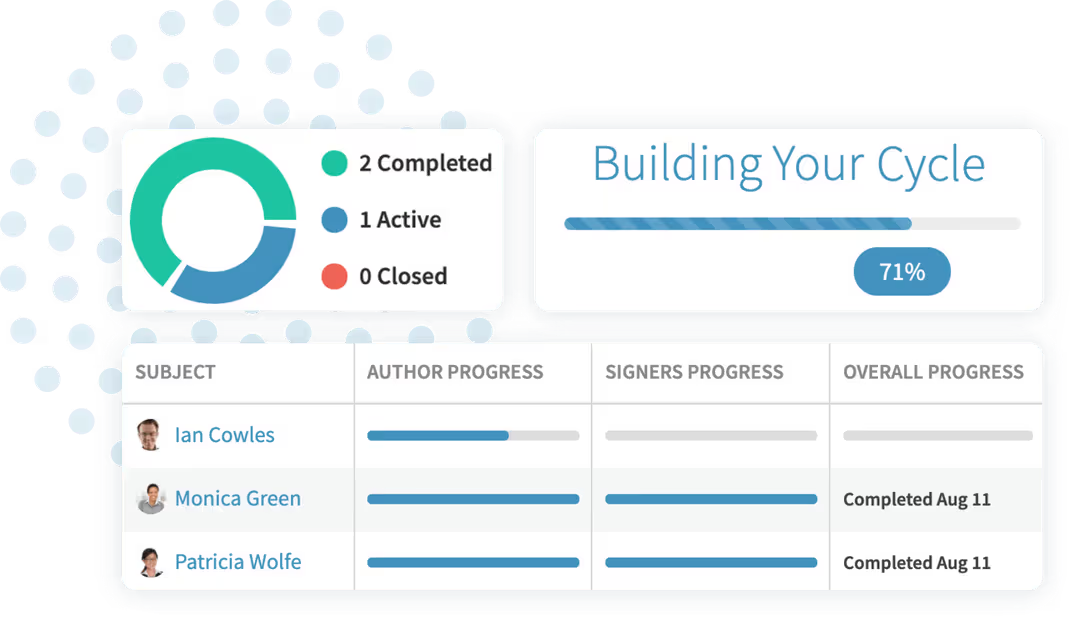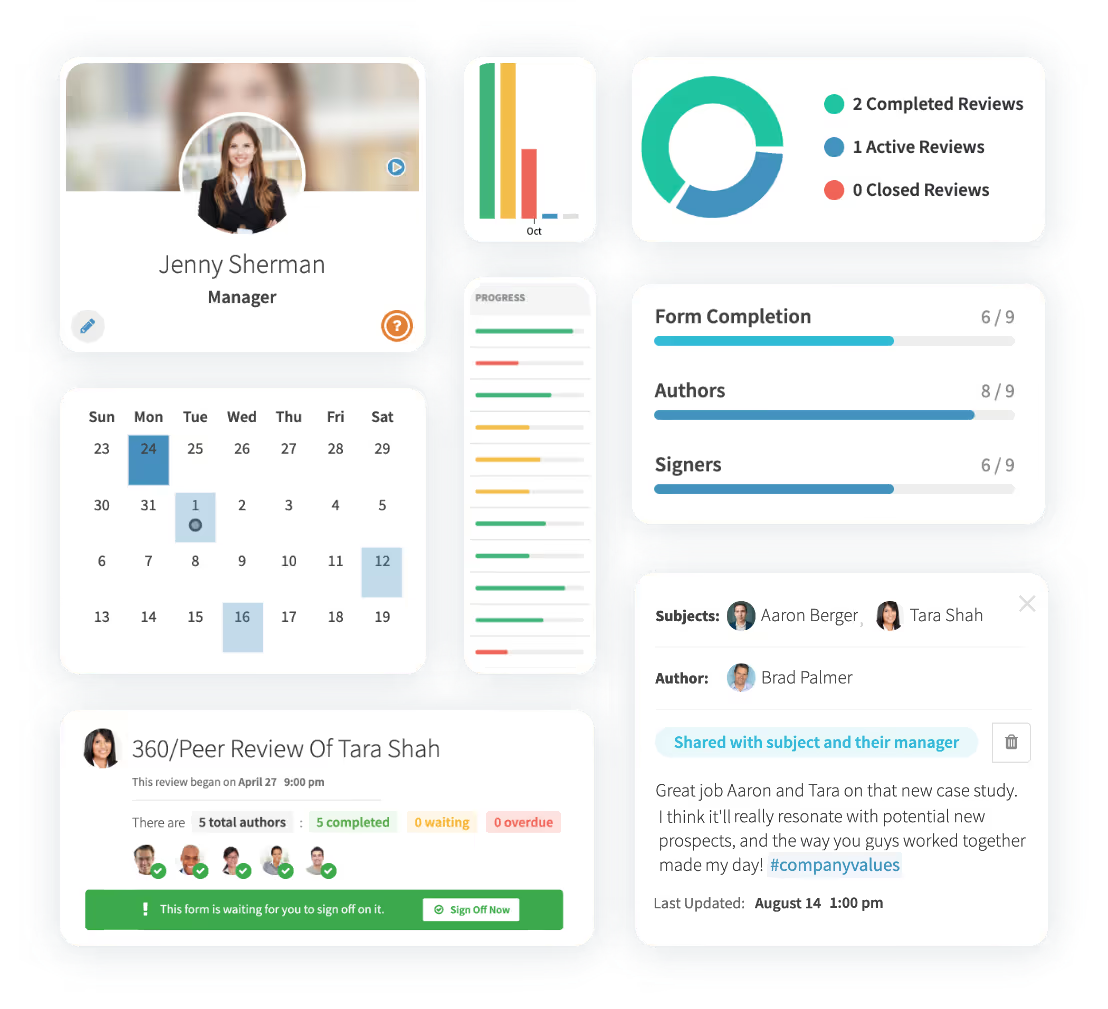How to Update Performance Appraisal Processes | 6 Steps
According to Gallup, only 14% of employees strongly agree that their performance reviews inspire them to improve. Traditional performance reviews and feedback approaches worsen performance about one-third of the time.
Why? One reason is employees don’t receive reviews regularly enough. Many organizations do one annual review. By the time employees hear feedback, the issue is obsolete, or they have already solved it.
Performance management must be more than a box-ticking exercise to be impactful. We’ll walk you through the steps of how to develop an effective performance appraisal process.
Step 1: Define the Purpose of Performance Appraisals
For most companies, the purpose of performance management is to give employees:
- the resources they need to develop
- deserved recognition to motivate them
- accountability measures
Discuss how you’ll measure accountability early on with your employee. It’s particularly important to have this discussion if you’ve recently started managing them. This discussion mitigates unpleasant surprises and helps employees perform to specific standards.
Quantitative measures are helpful for their specificity.
Example:
Your marketing employee should publish at least three monthly content pieces.
Development-focused reviews are popular these days, from weekly 1-on-1s to engagement surveys. Perhaps your employee is hesitant to ask for the resources they need to optimize their performance. Reviews give them this opportunity.
Example:
The employee may have trouble with public speaking. Maybe they need guidance for coordinating among many stakeholders. The review presents them with a good time to ask for help.
Recognition is an influential motivating factor but exercise caution. An employee could have immeasurable talent but cause friction in the workplace. They could also use the recognition to rationalize less-than-ideal behavior. Take a holistic approach when you’re awarding recognition.
Step 2: Partner with Leadership and Management
It’s essential to talk to managers about what they want from a performance management program. You also have to make it easy for managers to run the program. Getting buy-in from managers early on will help you design a process they appreciate.
For example, a salesperson has to hit a specific target each month. The problem is that their manager has been promoting people who haven’t consistently hit this target.
This could be because the manager uses both quantitative and qualitative measures. Maybe the manager thinks about how effective employees are as teammates, or whether or not they provide mentorship and guidance. This manager might not want to use numbers-based reviews but instead, ask open-ended questions.
The secret to effective performance reviews is to get on the same page with team managers, executives, and department heads.
Step 3: Design the Review Forms and Cycle Timing
Generic and outdated review forms won’t do you and your employees any favors. The goals of the demand generation team are never going to be the same as the talent acquisition department. Different individuals require different questions and feedback. Therefore, you must establish how to update performance appraisal processes.
PerformYard can help. The platform lets you customize performance review forms and update old ones with a few clicks. You won’t have to worry about tedious spreadsheets and sorting through different cells. In addition to writing specific comments, you can check off different fields for who’s reviewing the evaluation. You’ll also be able to incorporate feedback to the employee from various people across the organization.

Step 4: Build Goals Into the Process
One of the best times to start focusing on goals is when you’re updating your performance appraisal process. Use software that tracks goals alongside appraisals, so employees know what they’re working toward and what they’ll be measured on.
Here are five things you should do right away to establish a strong culture of achieving goals:
- Decide if you want biweekly, monthly, or quarterly goals.
- Define expectations, timelines, and contributions.
- Break up larger goals into smaller, measurable tasks and link them to a timeline.
- Track them individually to see where your employees excel or fall off track.
- Continue to revisit your goals, show your employee the data, and work with them on improvement.

Step 5: Try to Recycle the Best Parts of Your Old Review Forms
You want your performance reviews to be regular and effective. It’s possible to set up a manual process that happens on a regular basis, but it takes a lot of work on the part of the HR team. That’s not to say you need to abandon your manual review process entirely.
PerformYard can help you move paper and email forms into the software platform. That means you don’t have to start from scratch when updating your performance appraisal process. Updating a process is as simple as streamlining the old forms and questions with PerformYard software.
Step 6: Invest in Performance Management Software
If you’re looking for solutions to performance appraisal problems, PerformYard is an invaluable resource. The platform consolidates and streamlines once-cumbersome review processes with features like one-click distribution. With one click, you can send forms to every reviewer in the organization.
Custom workflows enable different stakeholders to coauthor a review or review employees in sequence. Receive notifications and track review completion processes. PerformYard lets you enjoy a super simple, flexible upgrade for your old, manual performance appraisal processes.

Next Steps for How to Update Performance Appraisal Processes
Standard performance reviews and processes won’t cut it anymore. The goal is to help your employee be the best asset possible for the company. Be purposeful about what your employee needs to benefit themselves, the team, and the company. Have reviews consistently, not once a year, and keep your documentation up-to-date. Lastly, use modernized software to make the process easier for everyone involved.

